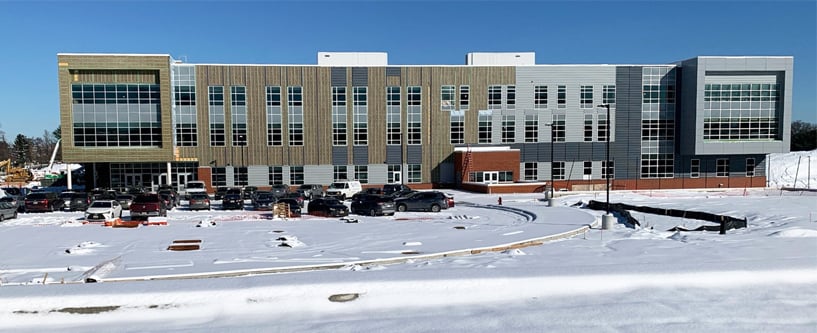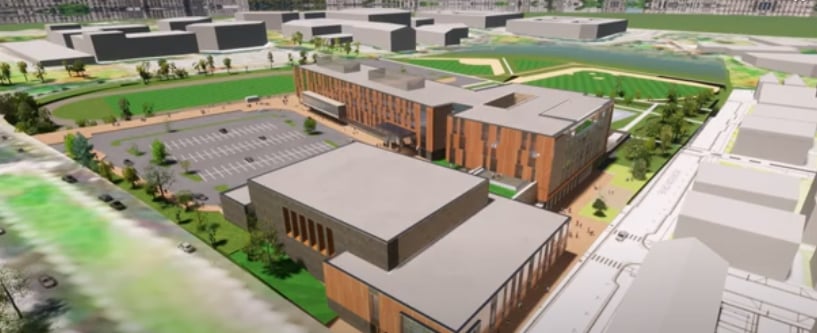 MONTGOMERY COUNTY PUBLIC SCHOOLS
MONTGOMERY COUNTY PUBLIC SCHOOLS
 MONTGOMERY COUNTY PUBLIC SCHOOLS
MONTGOMERY COUNTY PUBLIC SCHOOLS


MCPS is hosting a new round of engagement sessions on the boundary studies during the first week of December. Four will be virtual; two will be in person.
Additional boundary options will be shared for each of the current boundary studies. These additional boundary options do not replace the current boundary options (A–D) that have already been released.
The additional options for the Woodward/Northwood Boundary Study will include the recommendation for the potential Silver Spring International Middle School closure.
The additional options for the Crown/Damascus Boundary Study will include the recommendation to utilize Crown High School as a temporary holding school for upcoming projects and the potential use of a hybrid option for local students.
The boundary options websites will be updated to include these additional options, and the surveys will be updated and extended to allow time for feedback.
Here are the dates, times and Zoom links/locations for the upcoming sessions:
| Woodward/Northwood | 12.01.25 (Monday) | 6:30-7:15 p.m. | Virtual | Zoom Webinar Link |
| Crown/Damascus | 12.01.25 (Monday) | 7:30-8:15 p.m. | Virtual | Zoom Webinar Link |
| Crown/Damascus | 12.02.25 (Tuesday) | 6:30-8:30 p.m. | In-Person | Gaithersburg HS |
| Woodward/Northwood | 12.03.25 (Wednesday) | 6:30-8:30 p.m. | In-Person | Einstein HS |
| Crown/Damascus | 12.04.25 (Thursday) | 11:30 a.m.-12:15 p.m. | Virtual | Zoom Webinar Link |
| Woodward/Northwood | 12.04.25 (Thursday) | 12:30-1:15 p.m. | Virtual | Zoom Webinar Link |
Opening of Crown High School and the Expansion of Damascus High School Boundary Study Options
An Introduction to the MCPS 2024/2025 Boundary Study
Una Introducción al Estudio de Límites en MCPS 2024-2025
We are opening Crown High School, expanding Damascus High School, and reopening Charles W. Woodward High School for the 2027-2028 school year. Because of this, we need to go through a boundary study process in order to determine who will attend these schools. We also have some schools who are experiencing overcrowding and this process will help to alleviate some of these challenges.
On December 5, 2024, the Board of Education adopted the Contract Approval of Request for Proposal No. 4998.1, Consultant for School Boundary Review for FLO Analytics to conduct and facilitate the boundary study. They have experience doing boundary studies with large, diverse school systems, some even larger than Montgomery County Public Schools (MCPS).
Our Board Policy, FAA, Educational Facilities Planning, identifies four main factors for consideration when establishing and making changes to school boundaries. These include:
We will begin our onboarding experiences with FLO Analytics to identify the timeline and initial approach. We will begin to share expectations for engagement and ongoing communication with our stakeholders, including students, staff, families, and the community.
This process will include input from multiple stakeholders, including a broad representation from the communities in the boundary study scopes, as well as a variety of viewpoints.
More specific information will be coming soon about the variety of engagement opportunties.
The reopening of Woodward HIgh School, the new Crown High School, and the expansion of Damascus HS will help alleviate several overcrowded high schools in the study areas. The boundary study is necessary to populate these schools and to help relieve overcrowding. At the middle school level it is necessary to identify feeder schools to Woodward and Crown and better balance utilization at the middle school level.
While the elementary school assignments will not change as a result of these boundary studies, the articulation patterns for the middle schools and high schools could change as a result. Therefore, while the elementary school assignment will remain the same, the assigned middle school and/or high school could change.
The boundary study process is guided by Board Policy FAA, Educational Facilities Planning, and Regulation FAA-FA, Educational Facilities Planning.
The four factors outlined in Board Policy FAA, Educational Facilities Planning, will be considered when recommendations for boundary options are developed.
These four factors are:
demographic characteristics of student populations,
geography,
stability of school assignment over time, and
factory utilization.
There is no weighting or priority for the four factors when determining boundary options.
When developing recommendations for the Board, the superintendent of schools will provide a rationale for each recommendation that demonstrates the extent to which any recommendation advances each of the four factors.
While each factor is considered, it may not be feasible to reconcile each and every recommendation with each and every factor.
Community engagement including participation and feedback in the boundary study process is utilized to advise the superintendent of schools regarding the impact on the community of the options. Board Policy FAA, Educational Facilities Planning, outlines stakeholder input in various processes, including the boundary study process.
In accordance with Board Policy ABA, Community Involvement, staff are directed to seek input from multiple stakeholders, and to engage in efforts to obtain broad representation from affected communities. These outreach strategies include surveys, interest forms, community engagement meetings, testimony in public hearings before the Board of Education, and other avenues for advocacy that will allow stakeholders to provide input and feedback on the options presented with accessibility and language considerations.
We will continue to share methods for community input and feedback throughout the phases of the boundary studies.
The superintendent of schools supports that the new boundaries be implemented beginning with grades 9 and 10 in the 2027-2028 school year and that rising grade 11 and 12 students remain at their current high school of attendance. The implementation would continue with grades 9 through 11 in the 2028-2029 school year followed by full implementation of grades 9 through 12 in the 2029-2030 school year.
In addition, the superintendent supports that the new boundaries be implemented beginning with grades 6 and 7 for the 2027-2028 school year, while the rising 8th grade stays at their currently assigned school followed by a full implementation of grades 6 through 8 in the 2028-2029 school year.
Ultimately, the Board of Education has the final approval for these decisions.
The walk zones developed for the middle and high schools identified in the boundary options will be developed in coordination with the MCPS Department of Transportation (DOT). The MCPS Department of Transportation analyzes safety and walkability conditions to recommend appropriate walking zones and routes to schools in alignment with Board Policy EEA, Student Transportation.
According to Board Policy EEA, a 2-mile walk zone is established for high schools and a 1.5-mile walk zone is established for middle schools.
More information about additional student safety considerations and criteria related to recommended walking routes can be found in Board Policy EEA.
FLO Analytics has experience conducting boundary studies throughout the nation, with experience in Maryland (Harford County Public Schools) and school systems larger than Montgomery County Public Schools (School District of Philadelphia). They will follow MCPS Board Policy FAA, Educational Facilities Planning and Regulation FAA-RA, Educational Facilities Planning to comply with the district’s educational facilities planning process throughout the boundary studies.
Initial Information Community Meeting Sessions
Initial Survey
Community Meeting Sessions
Initial Options Survey
Synthesize Feedback & Refine Options
Community Meeting Sessions
Refined Options Survey
Synthesize Feedback & Further Refine Options*
Option Development for Superintendent Recommendations
This is a flexible timeline that will be revisited as the boundary studies progress.*